WERNER HERZOG: 10 Essential Movies You Must See
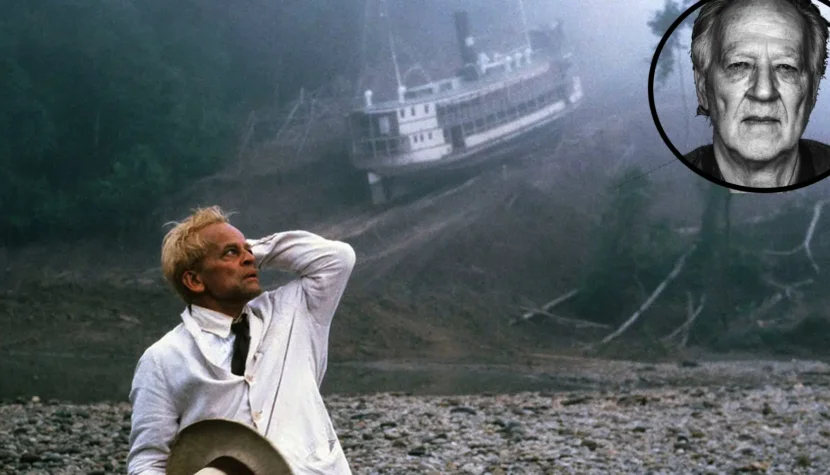
It includes feature films, documentaries, and shorter forms, often focusing on telling the story of a specific person, event, or place.
At the end of the 1970s, François Truffaut called Werner Herzog the most important director of all living filmmakers.
Roger Ebert, on the other hand, remarked that even when Herzog stumbles, and his film ends in failure, it is a spectacular failure, because it is built on the foundation of a truly creative and entirely independent approach to cinema. Some consider him a madman, willing to sacrifice his health and life, as well as the lives of his crew, in the name of art. Others point out that he was the only one able to tame a madman—after all, it was under his directorial hand that the difficult career of Klaus Kinski flared up and burned out like a comet.
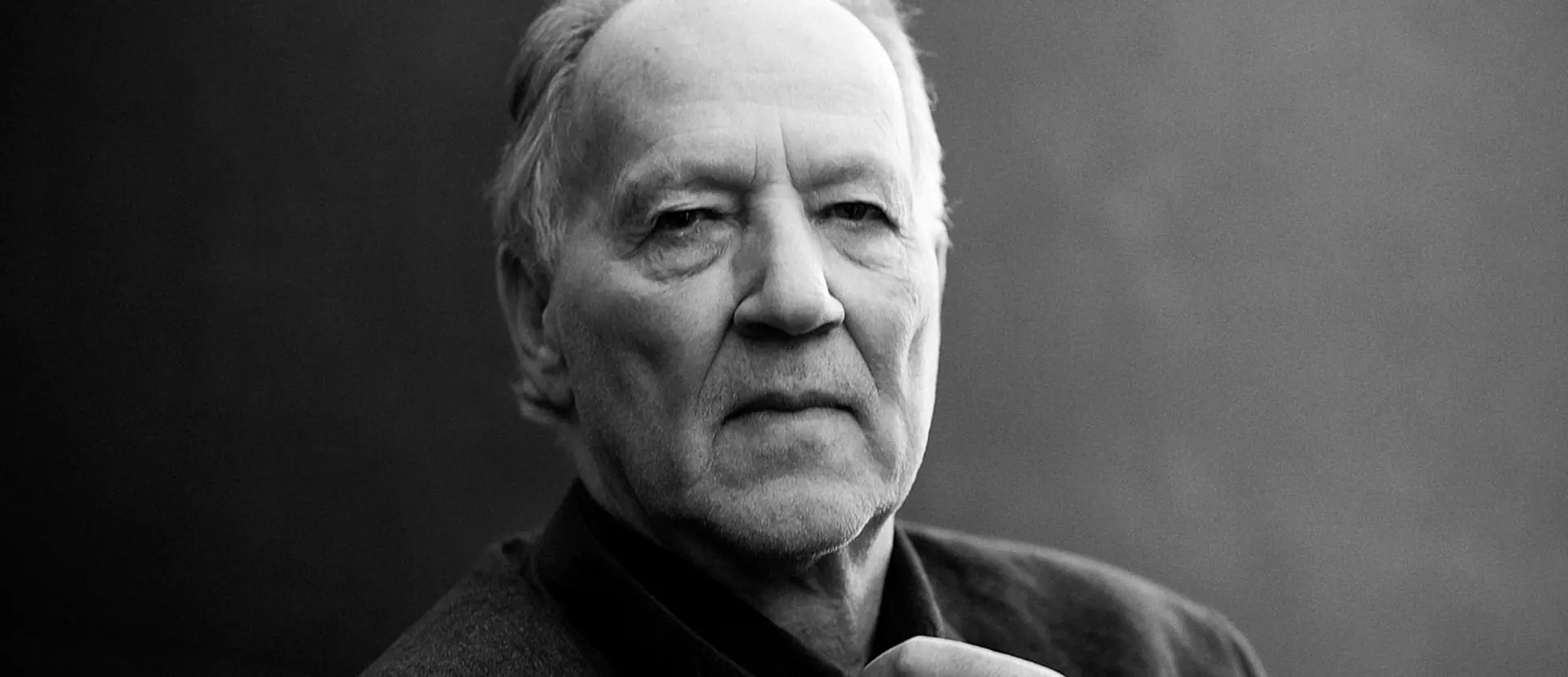
While making his films, Herzog nearly died during a snowstorm on a rocky spire in Patagonia, was shot while illegally crossing the border between Honduras and Nicaragua, and managed to haul a more than 300-ton steamboat up a forested hill in the Peruvian jungle. When he learned about the serious illness of his mentor, the German film theorist Lotte H. Eisner, he embarked on a walking journey from Munich to Paris, believing that the effort of a three-month trek through snowy Europe would have a magical potential to heal her. In his life, he planned to kill Kinski with a homemade bomb and, for Errol Morris’ film, even dig up the grave of a body buried by Ed Gein, an American serial killer. As a result of a lost bet, he ate his own shoe on camera.
Ladies and gentlemen, here is Werner Herzog, and my personal ranking of his ten best films.
10. Cobra Verde (1987)
If you look at Cobra Verde from a technical standpoint and compare it to titles that won’t be on this list, you might justifiably question why it’s included. The story of Francisco Manoel da Silva at times suffers from script deficiencies that make the characters on screen act like background elements, meant to highlight Klaus Kinski’s role. On the other hand, the escalating conflict between the creator and actor, which led to the firing of cinematographer Thomas Mauch, resulted in Herzog being unable to fully control the growing madness of the lead actor. Years later, Herzog even admitted that Cobra Verde is, in many ways, a strange film to him, dictated by the necessity of making further compromises based on Kinski’s directorial suggestions, who was then consumed with the idea of embodying the character of Paganini. So why is the film on this list?
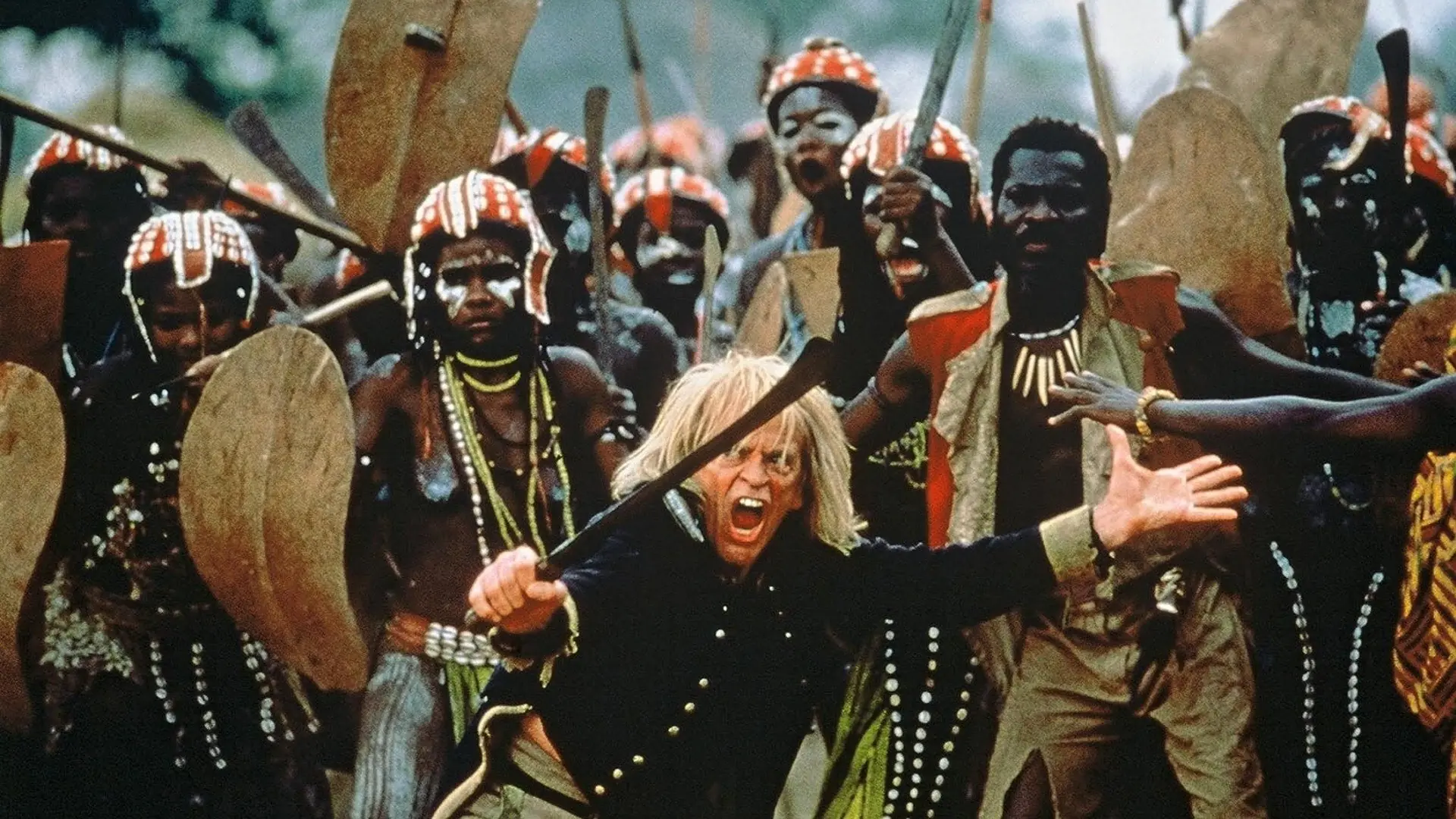
There are at least two reasons for this. The first is what happens between the lines. Kinski’s mounting madness and the escalating conflict between him and the entire crew practically hangs in the hot, African air. Cobra Verde is the last film that resulted from a collaboration between Kinski and Herzog. This sense of finality, the feeling that a certain story is ending, pours out of the frames. In a way, it’s a record of the constant struggle between the actor and the creator who tries to tame him, to overpower him by trapping him among hundreds of exotic extras distracting the audience’s gaze from the grimaces on his face. The second reason is the scenes in which Cobra Verde transcends its narrative about da Silva, becoming a hypnotic, haunting tale of humanity. The film’s final scene, in which Kinski tries to pull a boat into the ocean and once again sail into unknown waters, searching for another place, another time, is pure poetry. It not only sums up the fates of the actor and his character but in an extraordinary way, confirms Hemingway’s maxim that a man can be destroyed but not defeated.
9. The Enigma of Kaspar Hauser (1974)
Kaspar Hauser was a teenage boy who appeared on the streets of Nuremberg on May 26, 1828. He had only two letters with him, which gave no clear explanation of his origins. He couldn’t read, speak in full sentences, or eat anything other than dry bread soaked in water. Bruno S. was born about a century later, as the unwanted child of a German prostitute. At the age of three, he was abandoned by his mother. For the next twenty-three years, he drifted between orphanages, homeless shelters, prisons, and psychiatric institutions. He couldn’t read or write and was diagnosed with schizophrenia. Herzog found him on the street. The man earned a living by painting simple pictures and playing music in public spaces. Bruno S. of course played the role of Kaspar Hauser in a film that Roger Ebert and Ingmar Bergman called one of the best they had ever seen.
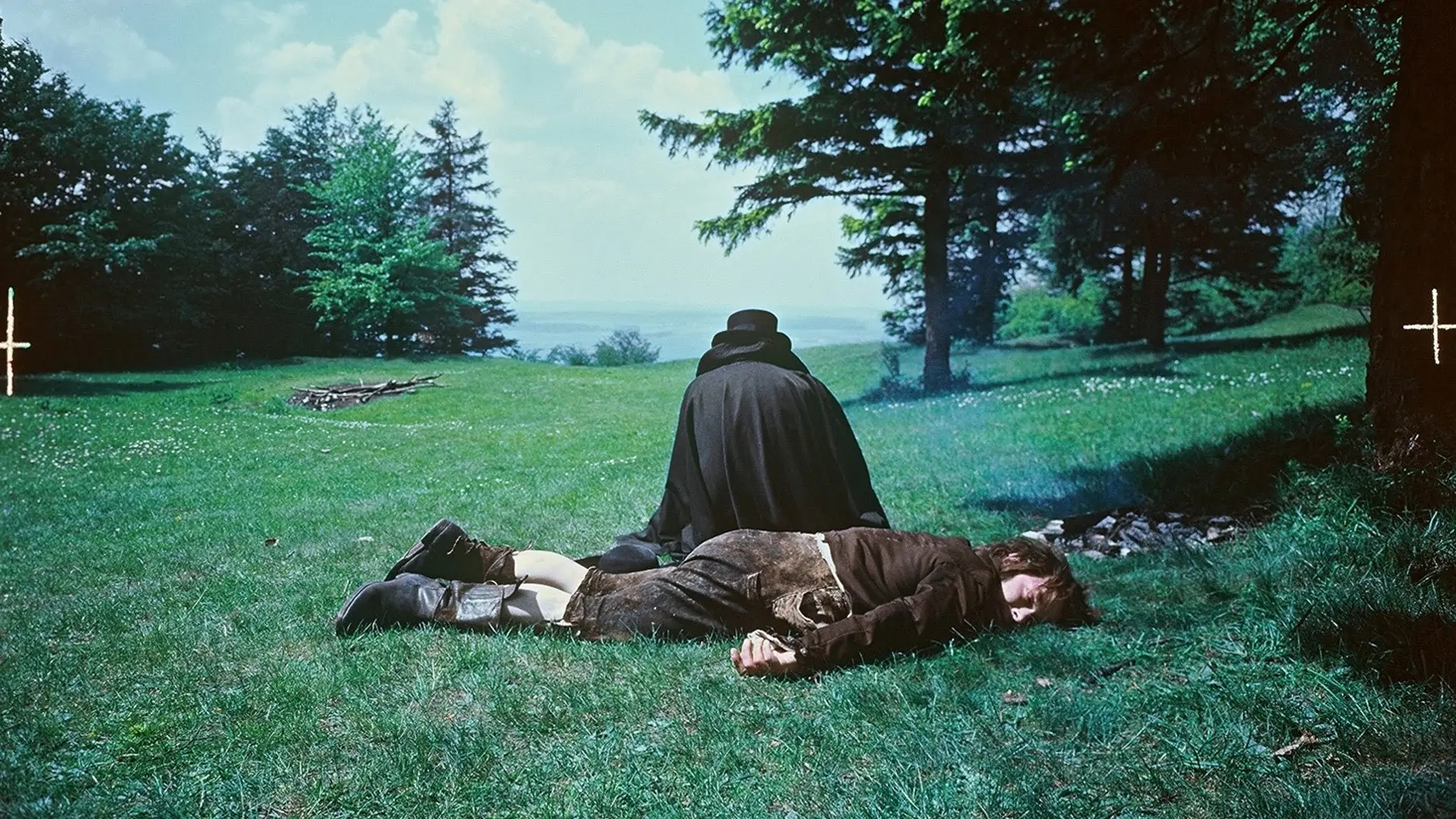
The Enigma of Kaspar Hauser is a film that sensitively, yet provocatively, questions the nature of humanity. Herzog deliberately confronts us with a person who is different, without restraining the strange behaviors of Bruno S., who at times seems entirely absent, and at other times stares into the camera, piercing us with a gaze that reveals no emotion. For Herzog, Hauser is the perfect excuse to demonstrate that the culture we revere is essentially an illusory bubble meant to distract us from fundamental questions about our existence and identity. The “enigma” in the title is, by design, unsolvable. We will never know who Kaspar Hauser truly was, nor why he made certain decisions during the film, and in the end, we may never know whether he understood more than the learned scholars who tried to study his case. The great, unsolvable mystery of man. “Culture as a source of suffering,” and the suffering of a man forced to live outside of culture. The quintessence of Werner Herzog’s cinema.
8. La Soufrière (1977)
La Soufrière is a thirty-minute documentary filmed by Werner Herzog, Jörg Schmidt-Reitwein, and Ed Lachman. Upon hearing that one of the volcanic islands of Guadeloupe was about to be destroyed by the eruption of the Soufrière volcano, the trio decided to travel to the endangered area and document the terrifying situation. What particularly intrigued Herzog was that one resident of the island steadfastly refused to evacuate and chose to remain in the path of the impending eruption. The director was interested in the motivation behind the man’s decision and his attitude toward death.
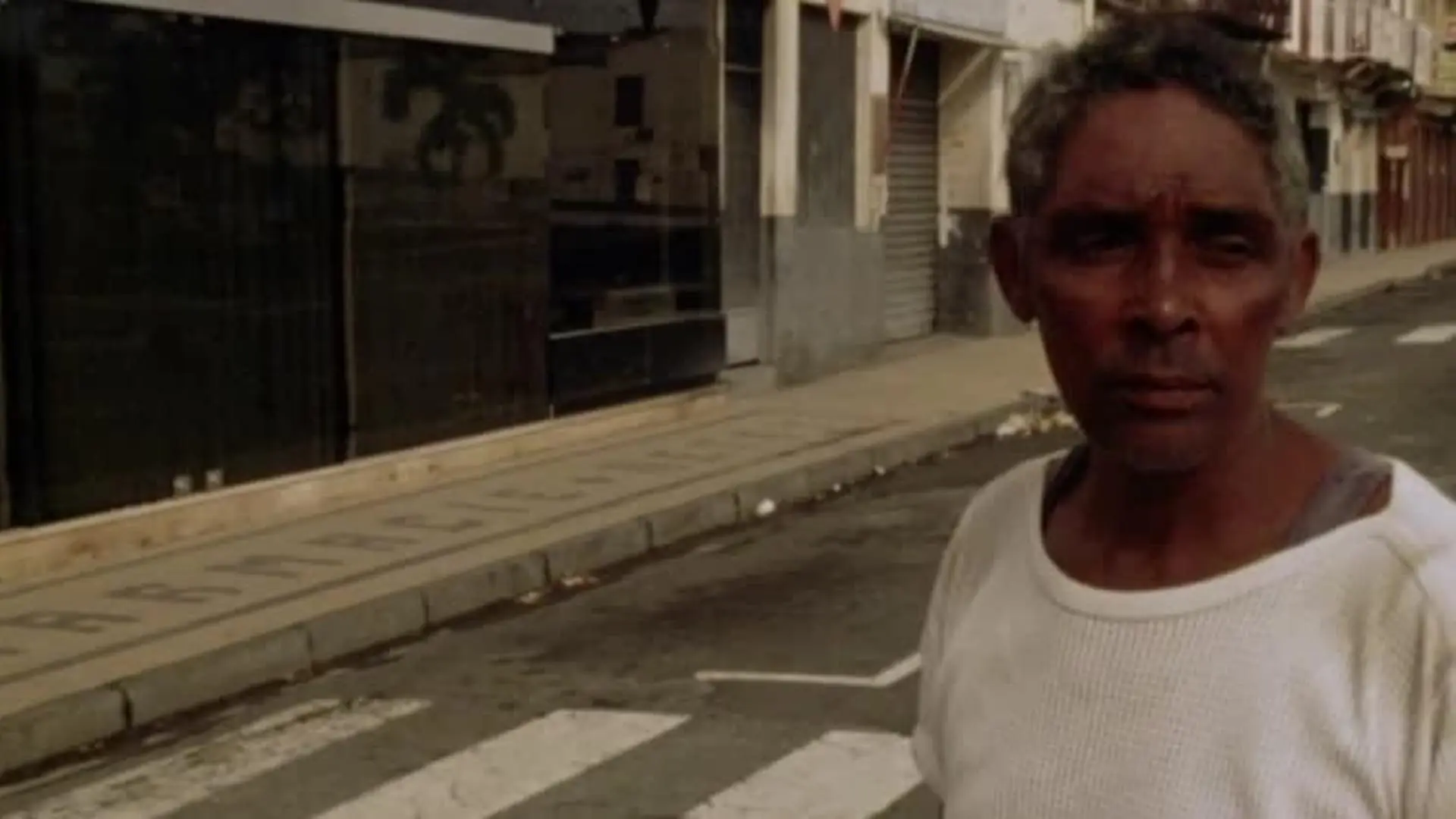
No amount of money, nationality, or the influence of producers behind a project can ensure the safety of the three madmen who, against common sense, decided to travel thousands of kilometers and venture deep into a land being torn apart by a volcano. If they had endangered the lives of the crew, forcing anyone not equally involved in the project to stay on Guadeloupe, they would have deserved moral condemnation. But no one can forbid anyone from risking their own life. Even if, to most of us, art seems utterly irrelevant in the face of such danger. Thanks to a mixture of madness and courage, viewers can admire La Soufrière. It is a strange film, filled with an unusual atmosphere of fear, collapse, but also excitement and human will. Finding the man who, despite government warnings, decided to stay on the island, calmly waiting for what fate would bring, is one of the most extraordinary scenes in Herzog’s entire filmography. The calm face of the local man, the cat lazily wandering around its owner, who waits in the shade of a tree with smoke billowing from the crater… Miłosz once wrote, “there will be no other end of the world.” Watching La Soufrière, it’s hard to disagree.
7. Scream of Stone (1991)
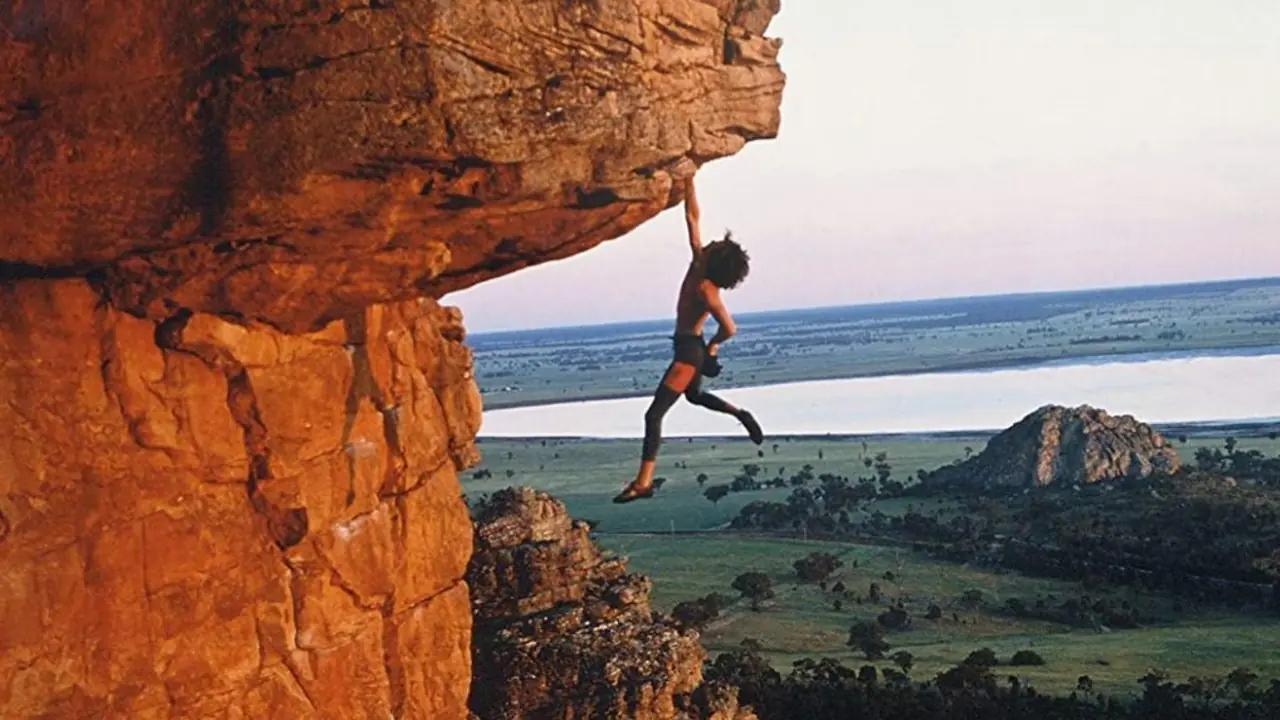
Herzog doesn’t particularly like this film. In his memoirs and interviews, he repeatedly stated that it didn’t turn out the way he wanted and that something was missing. In a sense, I agree with him. At times, Scream of Stone feels somewhat awkward, especially in the development of the romantic subplot, which dangerously approaches the boundary of TV drama clichés. However, for anyone who loves mountains, the story of climbing Cerro Torre contains real magic. The entire real-life history behind the conquest of this towering rock spire above the remote regions of Patagonia, the controversies surrounding its taming by humans, and the efforts of subsequent expeditions to prove that one can stand on its peak without using heavy equipment and artificial aids, form the living legend of alpinism. Herzog understands this legend deeply and interprets it in a way that, alongside the story of conquering the mountain and breaking personal limits, he also tells a tale of love for another person and for cinema. Despite the passage of years, the final scene of the film still makes me want to scream. It’s the essence of Herzog’s cinema—a perfect audiovisual commentary on the condition of every person, regardless of whether they spend their time at home with family or risk their life by planting an ice axe into the slopes of one of the most inaccessible peaks in the world. Each of us has our own Cerro Torre, and each of us must ask ourselves whether the peak itself is important, or the path we must take to reach it.
6. My Best Fiend (1999)
If Herzog hadn’t met Kinski along his path, he probably never would have become a director of such stature. And this is not to say that the actor’s support somehow helped him in taking his first steps into the world of cinema. Often, the situation was quite the opposite: Kinski’s eccentric and dangerous behavior often placed Herzog’s films in jeopardy. Their relationship was toxic from the beginning, leading to numerous nervous breakdowns for both men, provoking fits of aggression, and often negatively affecting the film crews who worked with them on set. At a certain stage in life, both Herzog and Kinski were simply madmen, colliding with each other with the force of a planetary impact. From the spark created by their confrontations, extraordinary films emerged. Around their productions, dozens of legends and stories arose, which for years alternately inspired and terrified generations of filmmakers and movie lovers.
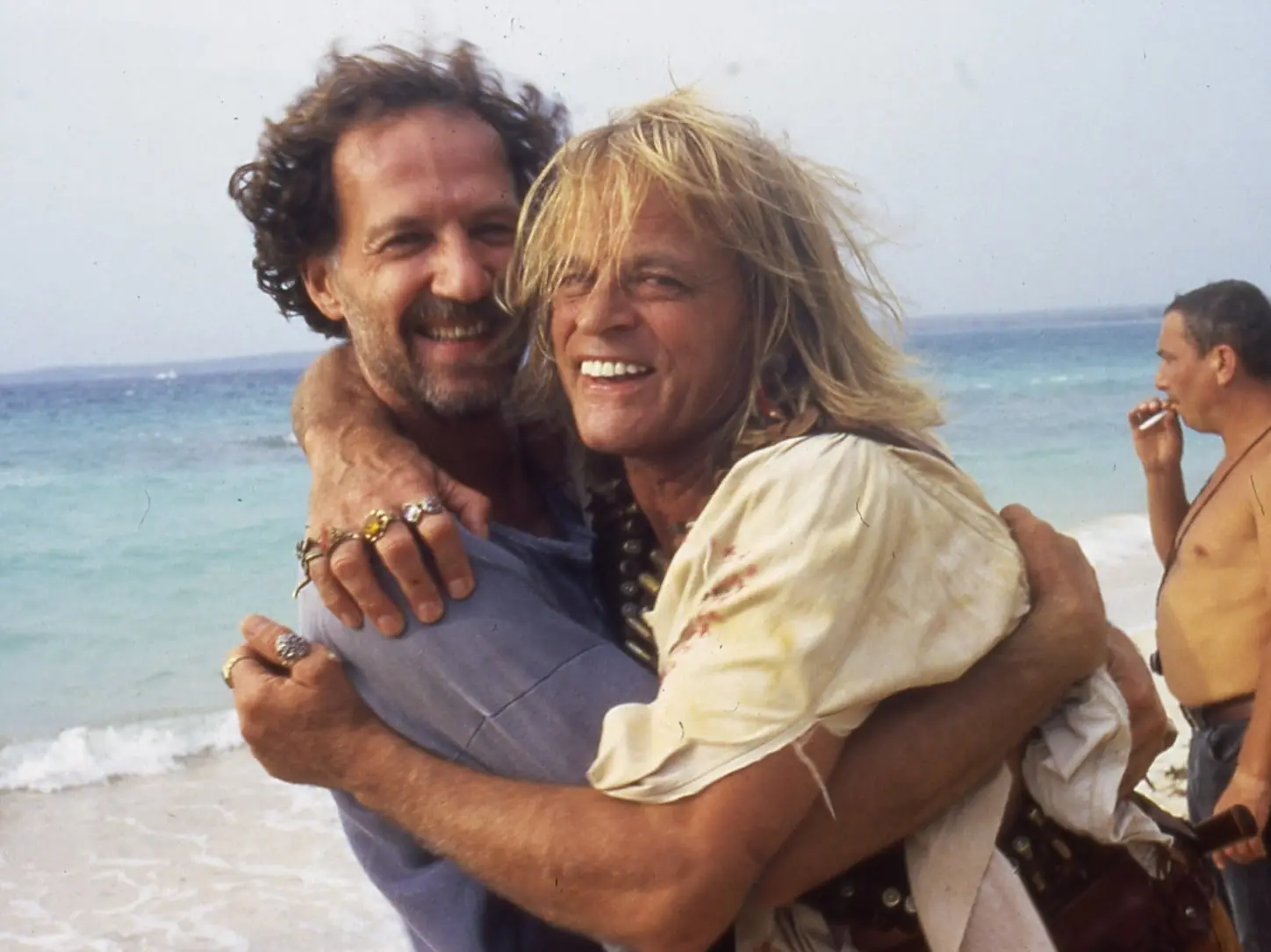
My Best Fiend is an emotional record of Kinski’s absence, as he passed away from a heart attack in 1991. Herzog created a film full of ambivalence, admitting that there were moments when he seriously considered killing the actor, wanting to erase him from his life, yet he could never completely free himself from Kinski’s presence. Among the various anecdotes from film sets and stories about their collaboration, the viewer is confronted with Herzog’s reflections, who is clearly struggling with himself, trying to understand why he misses a man he considered his greatest enemy for much of his life. The film is an extraordinary look not only at one of the most fascinating collaborations in cinema history but also at the inner complexity of the people who contributed to this duo. And that scene where a joyful Kinski plays with a butterfly—something both beautiful and terrifying at the same time.
5. Nosferatu the Vampyre (1979)
The figure of the vampire has been heavily worn out by recent pop culture, but it’s important to remember that the essential elements of the vampire myth are melancholy, nostalgia, and decadence, all of which pour out of Herzog’s meticulously composed shots in Nosferatu the Vampyre. The director considers F.W. Murnau’s expressionist gem, the film on which his version is based, to be one of the most important, if not the most important, films in the history of German cinema. Max Schreck, who played Count Orlok in the original, became an undeniable icon who reigns over the imagination of generations of horror film enthusiasts. His portrayal of the vampire was ahead of its time and hasn’t aged, even nearly a century after the first screening of Murnau’s film. Because of this, Herzog and Klaus Kinski, who was set to portray the vampire in Herzog’s version, faced an extraordinarily difficult and ambitious task.
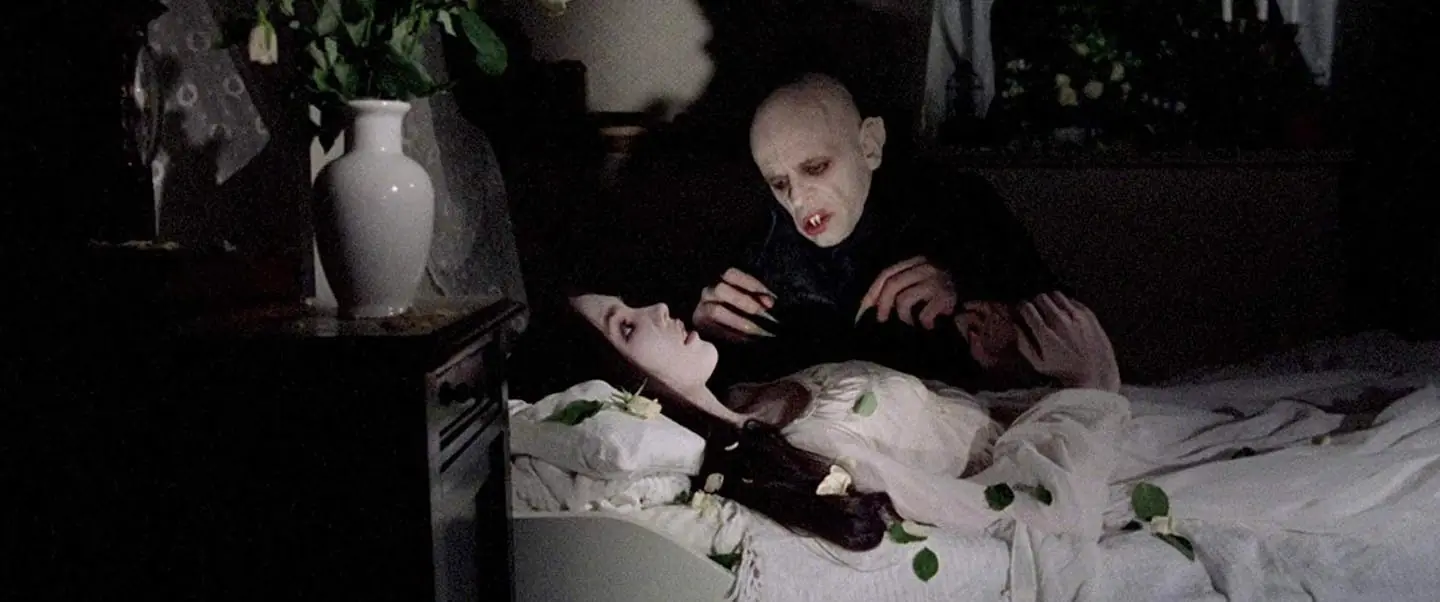
The result, however, was brilliant. Nosferatu the Vampyre in their execution is not a mere copy clumsily imitating the work of the Murnau-Schreck duo. The film emphasizes entirely different aspects of the vampire story. The monster in Herzog’s film sometimes seems more human than the characters around him. In Kinski’s interpretation, we find deep sensitivity and compassion for a character doomed to eternal life, driven by an insatiable thirst for blood and love. Herzog turns the vampire story into a beautiful tale about the beast’s longing for humanity. Kinski delivers one of the finest performances of his career, while the music by Popol Vuh and the cinematography by Jörg Schmidt-Reitwein transform this extraordinary journey into something akin to the best Romantic paintings. An absolutely magnificent film.
4. Encounters at the End of the World (2007)
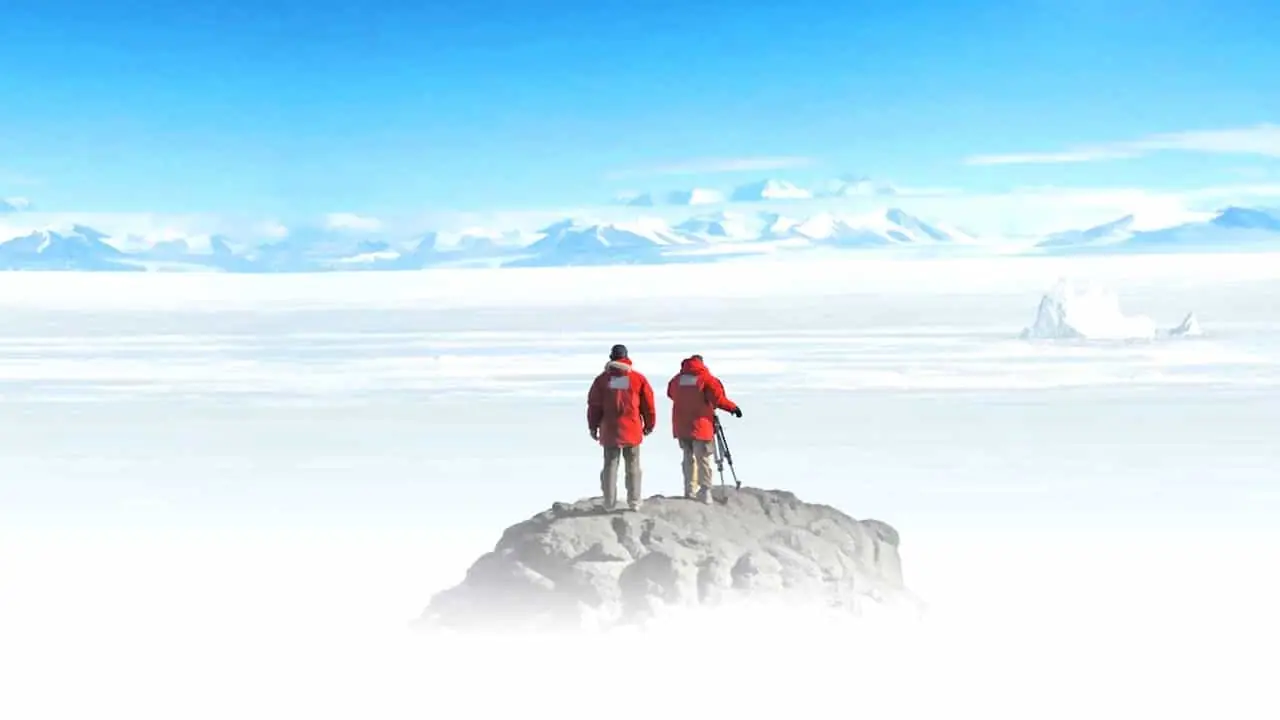
In everyone’s life, there are moments and films where the ability to express one’s feelings and thoughts convincingly borders on the miraculous. Every word written becomes clumsy and inadequate, and nothing can truly capture the emotions that well up inside. For me, Encounters at the End of the World is one such film. Somewhere at the edge of the world, in the impenetrable snows of Antarctica, Herzog unexpectedly finds humanity in all its grandeur. Far from the wars people fight, in quiet communion with nature, full of passion, joy, and wisdom. The ice-covered continent, drenched in white, serves as a blank slate on which we can start anew, try to understand and fix the mistakes made over the years. It’s a story about all of us, a sensitive and wise reflection on the condition of humankind and our connection to nature. Philosophical cinema without pretension—pure magic. It makes you want to drop everything and, against common sense, rush toward the snow-covered mountains, like a certain penguin who is the protagonist of one of the most moving scenes in the history of documentary cinema.
3. Fitzcarraldo (1982)
I don’t know if anyone, from the first Lumière brothers’ screening at the Indian Salon to modern times, has ever made a greater tribute to human madness than Fitzcarraldo. This film is a nearly insane project in and of itself, as confirmed by the excellent documentary Burden of Dreams, which tells the story of its production. Clearing a section of the Amazon rainforest, building makeshift machines, and using them to haul a 300-ton steamboat up a hill is a feat unmatched in the history of cinema and the arts. Herzog himself, referencing the memoirs of one of the fathers of modern alpinism, Lionel Terray, called himself, in the context of this event, “the conquistador of the useless.”
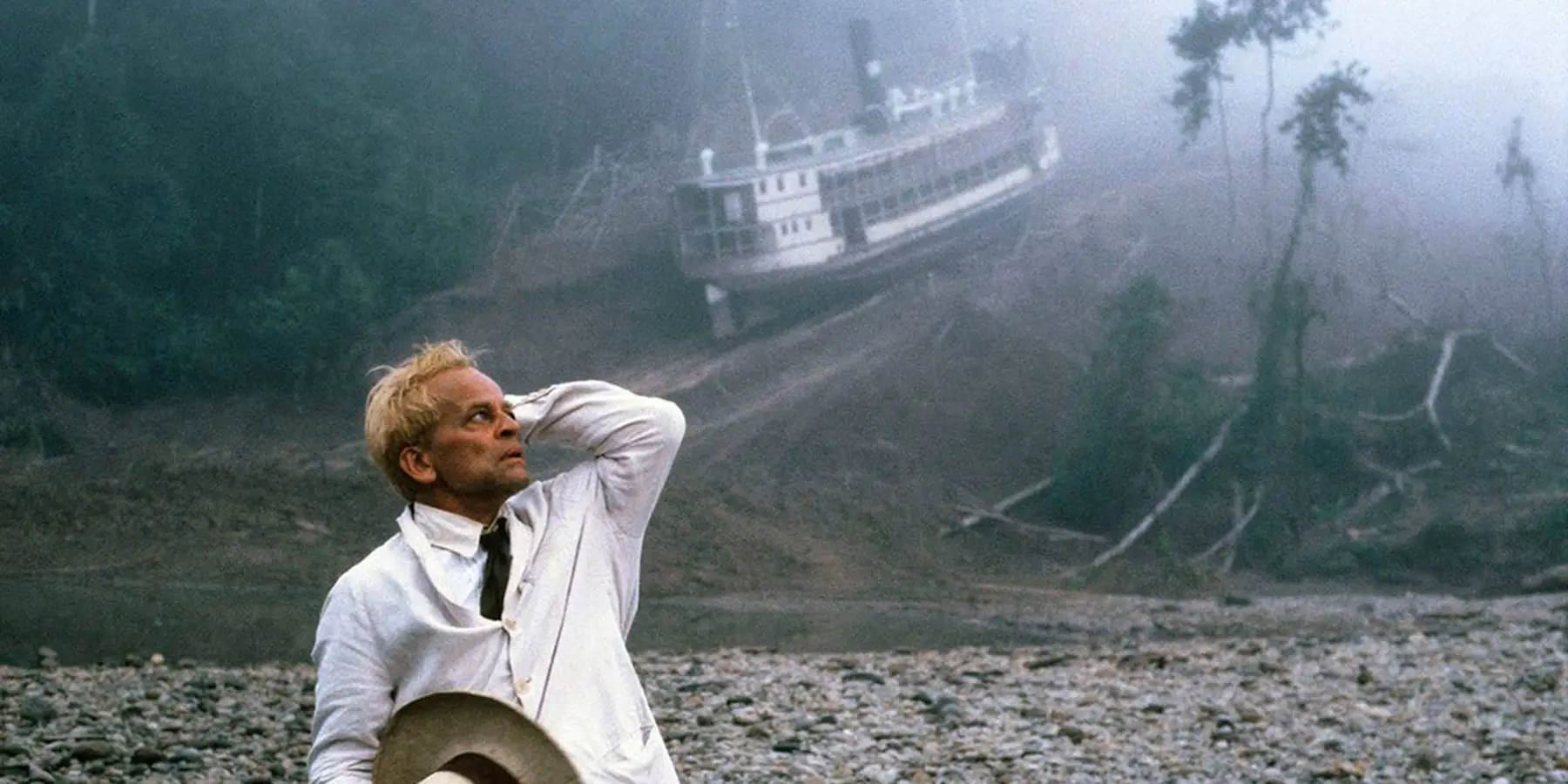
This phrase may initially seem misleading, suggesting that it wasn’t worth climbing those snow-covered peaks scattered across the world, or that it wasn’t worth the years of struggle on the banks of the Urubamba River to tell the story of an Irishman wanting to build an opera house in the heart of the jungle. Yet nothing could be further from the truth. When, in the 1920s, a journalist asked George Mallory, the first person attempting to conquer Everest, why he wanted to climb the peak, Mallory simply replied, “Because it’s there.” Fitzcarraldo is a story about this very remarkable, often destructive, human stubbornness, without which we would be no different from any other animals focused solely on procreation and the search for food. It is this impulse that pushes our species forward, though often functioning like a double-edged sword. In this light, Fitzcarraldo is a full-throated, operatic ode to humanity, with all its flaws. A tale of how much can be achieved if one dares to dream and how much can be lost if one dreams too much. One of the most extraordinary spectacles in the history of cinema.
2. Aguirre, the Wrath of God (1972)
The very first scene of Aguirre signals to the viewer that they are about to experience something extraordinary. A group of anonymous figures is seen climbing toward the misty summit of Huayna Picchu, while Popol Vuh’s score accentuates the uniqueness of the moment. Among the vastness of nature, humans appear so small and lost, seemingly insignificant, weak beings. Very soon during the film, it becomes clear that the overwhelming abundance of the Amazon jungle—the labyrinth of rivers, rocks, and trees surrounding the group of conquistadors—serves as a powerful metaphor for the human mind. A mind slowly losing its grip on reality, unable to come to terms with its own madness, fighting until the very end to stay afloat and not succumb to the unstoppable current of thoughts and emotions, which can be far more treacherous than the Urubamba River.
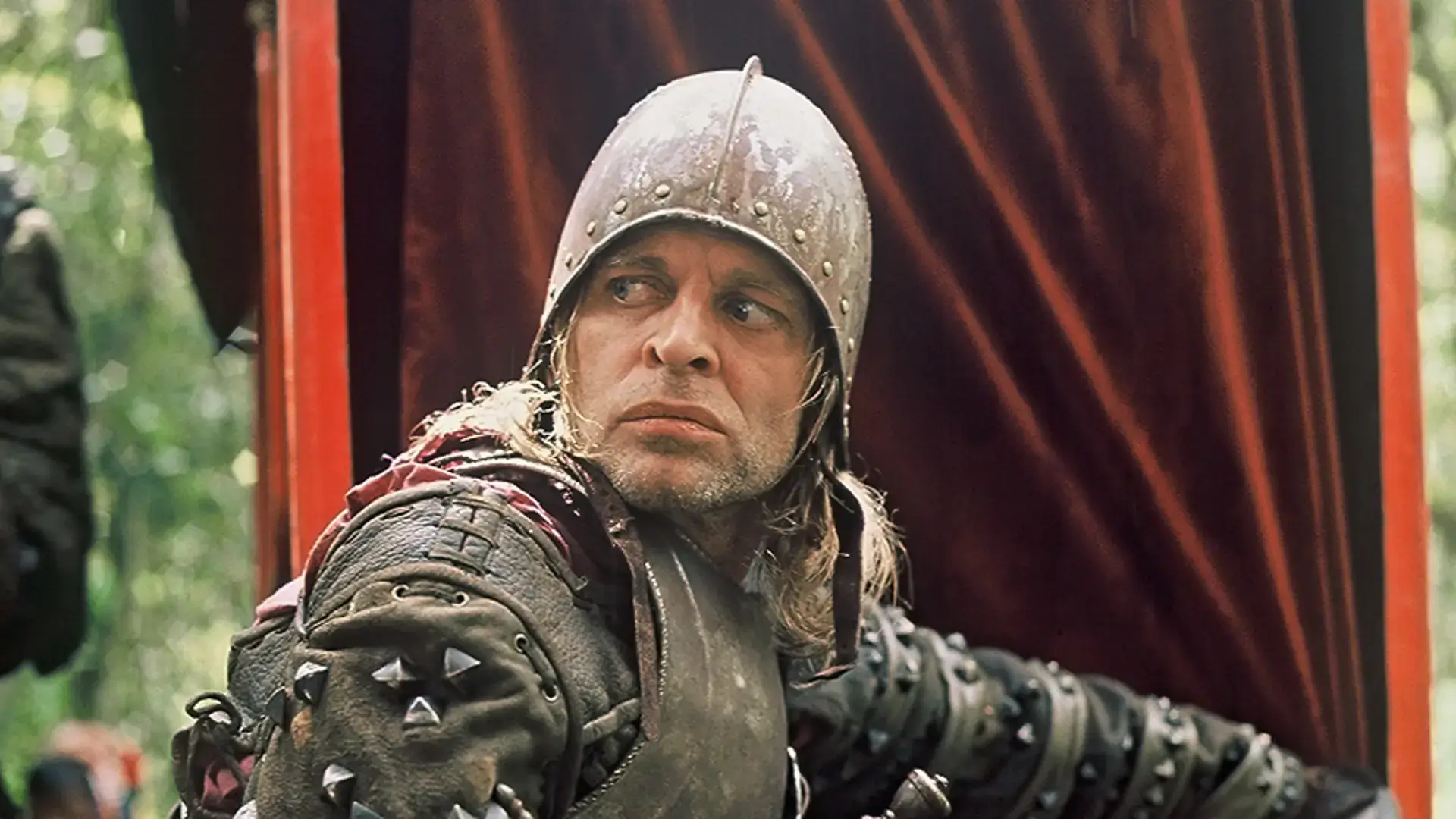
Aguirre is a harrowing story of a descent into an abyss from which there is no return. An abyss that, years later, would utterly consume Klaus Kinski, the actor who played the title role. Every element of this film brims with tension, making you want to look over your shoulder on behalf of the characters to ensure that nothing is watching, stalking, or trying to kill them. A staggering cinematic experience that has lost none of its power over the years.
1. Stroszek (1977)
In most of Herzog’s films, hope never dies. Even when Death sharpens its scythe just beyond the door, we feel that the characters still have a chance, that their fate can be changed. Perhaps this is why Stroszek, where hope violently and definitively dies, is so shocking and, in its ugliness, greyness, and total despair, so beautiful. Only Herzog could make a film about a mentally delayed ex-convict, an eccentric old man, and a prostitute so moving and nuanced that there’s hardly anything like it in all of cinema and literature. On the surface, the film offers nothing positive. It may seem like a senseless string of abuses heaped upon characters who clearly don’t fit accepted standards of beauty. Yet there is something profoundly human in this melancholic tale of unfulfilled dreams of a better life. The bond that forms in this brief, almost magical moment between three such different people tugs at the heart, making us wonder if it wasn’t worth losing just for those few moments together. Faced with broken lives and shattered dreams, the connection with another person is a miracle that every character in Stroszek must have prayed for. But every miracle can easily turn into another nightmare, as the world doesn’t always bend to the will of the visionaries and romantics who fill thousands of frames in Herzog’s filmography.

Roger Ebert once said that the final sequence of Stroszek is one of the most brilliant, if not the most brilliant, ever filmed. It’s hard to disagree with him. No one has ever shown, so forcefully, disgustingly, and (paradoxically) poetically, just how entangled we are in life and how far we are willing to go down a blind alley in order to make that life conform to the dreams our culture imposes on us.

